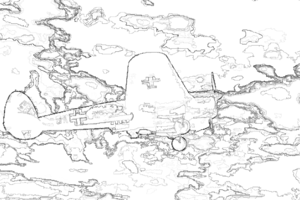Publications/crozet.14.icip.inc
From LRDE
Figures
Fig. 1
Error creating thumbnail: Unable to save thumbnail to destination
|
Error creating thumbnail: Unable to save thumbnail to destination
|
| (a) Denoising (self-dual grain removal). | |
|---|---|
Error creating thumbnail: Unable to save thumbnail to destination
|
Error creating thumbnail: Unable to save thumbnail to destination
|
| (b) Shape Filtering (keep round objects). | |
Error creating thumbnail: Unable to save thumbnail to destination |
Error creating thumbnail: Unable to save thumbnail to destination |
| (c) Object Detection (energy-based method). | |
Error creating thumbnail: Unable to save thumbnail to destination |
|
| (d) Hierarchical Segmentation (saliency-based). | |
Error creating thumbnail: Unable to save thumbnail to destination |
Error creating thumbnail: Unable to save thumbnail to destination |
| (d') Hierarchical Segmentation: fine (left), coarse (right). | |
Fig. 1: Sample uses of the tree of shapes.
Fig. 2
Error creating thumbnail: Unable to save thumbnail to destination
|
Error creating thumbnail: Unable to save thumbnail to destination
|
| (a) Image | (b) Tree of shapes |
|---|
Fig. 2: An image (a) and its tree of shapes (b). The propagation of the level line λ ended, meaning that the nodes O and A have already been visited. The hierarchical queue contains the interior contour of B and C. Thus it can be partitioned in two sets S⁺λ</math> = ∂B and S⁻λ = ∂C. The propagation can proceed on both parts in parallel.
Fig. 4

|
~ Error creating thumbnail: Unable to save thumbnail to destination ~
|
~ Error creating thumbnail: Unable to save thumbnail to destination ~
|
| (a) Input | (b) Subdivided | (c) Immersed |
|---|
Fig. 4: (a) is the input image. (b) is the result of the subdivision. (c) is the result of the immersion into the Khalimsky grid. 0-faces are represented by dots, 1-faces by segments and 2-faces by squares.
Fig.8
Error creating thumbnail: Unable to save thumbnail to destination
|
Error creating thumbnail: Unable to save thumbnail to destination
|
| (a) Original image | (b) Re-valued image |
|---|
Fig. 8: The original image (a) and the associated F^{ord} (b); the max-tree of (b) coincides with the tree of shapes of (a).
Fig. 10
Error creating thumbnail: Unable to save thumbnail to destination
|
Fig. 10: Computation times (in seconds) on a classical image test set of the following algorithms: FLLT [3], FLST [23], Géraud et al. [2], and this paper proposal.
Images
Images used for the benchmarks: [1]

